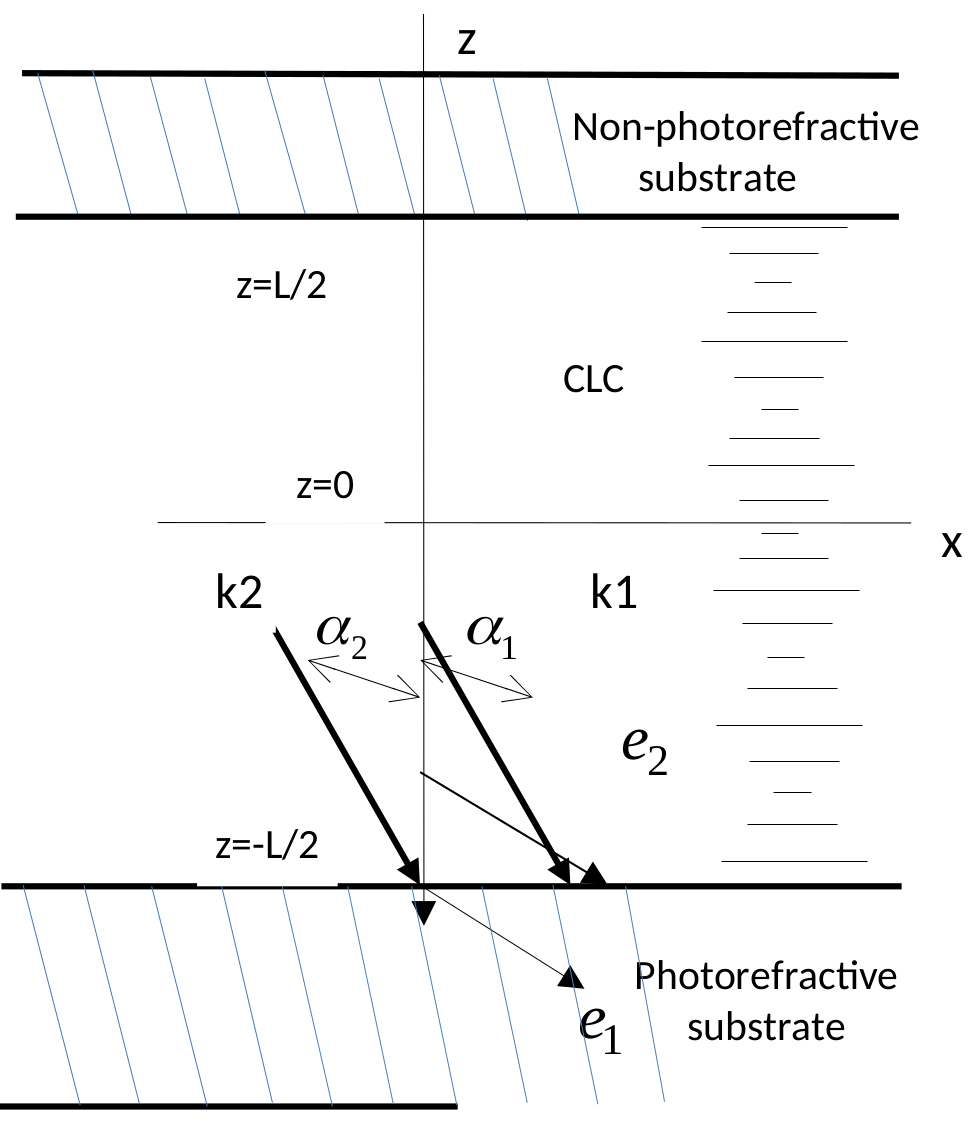We develop a theory describing two-beam energy exchange in a cholesteric liquid crystal (CLC) stabilized in the planar state by a helicoidal polymer network. The CLC layer is placed between photorefractive and non-photorefractive substrates and illuminated by two intersecting coherent light beams. An interference pattern created by the incident beams induces a spatially periodic space-charge electric field in the photorefractive substrate. The field penetrates into the adjacent CLC layer and interacts with the charges trapped on the polymer fibrils forcing the fibrils to move along the helicoidal axis. At new positions, the fibrils reorient the CLC director and, therefore, induce a director grating. The light beams propagating across the cell couple within the grating. We calculate the energy exchange between the coupled beams and the gain of the weak light beam. We analyze the dependence of the gain coefficient on the parameters of the polymer network and the CLC and show that it can reach values greater than those obtained in typical solid photorefractive crystals.
Download a copy of the manuscript

